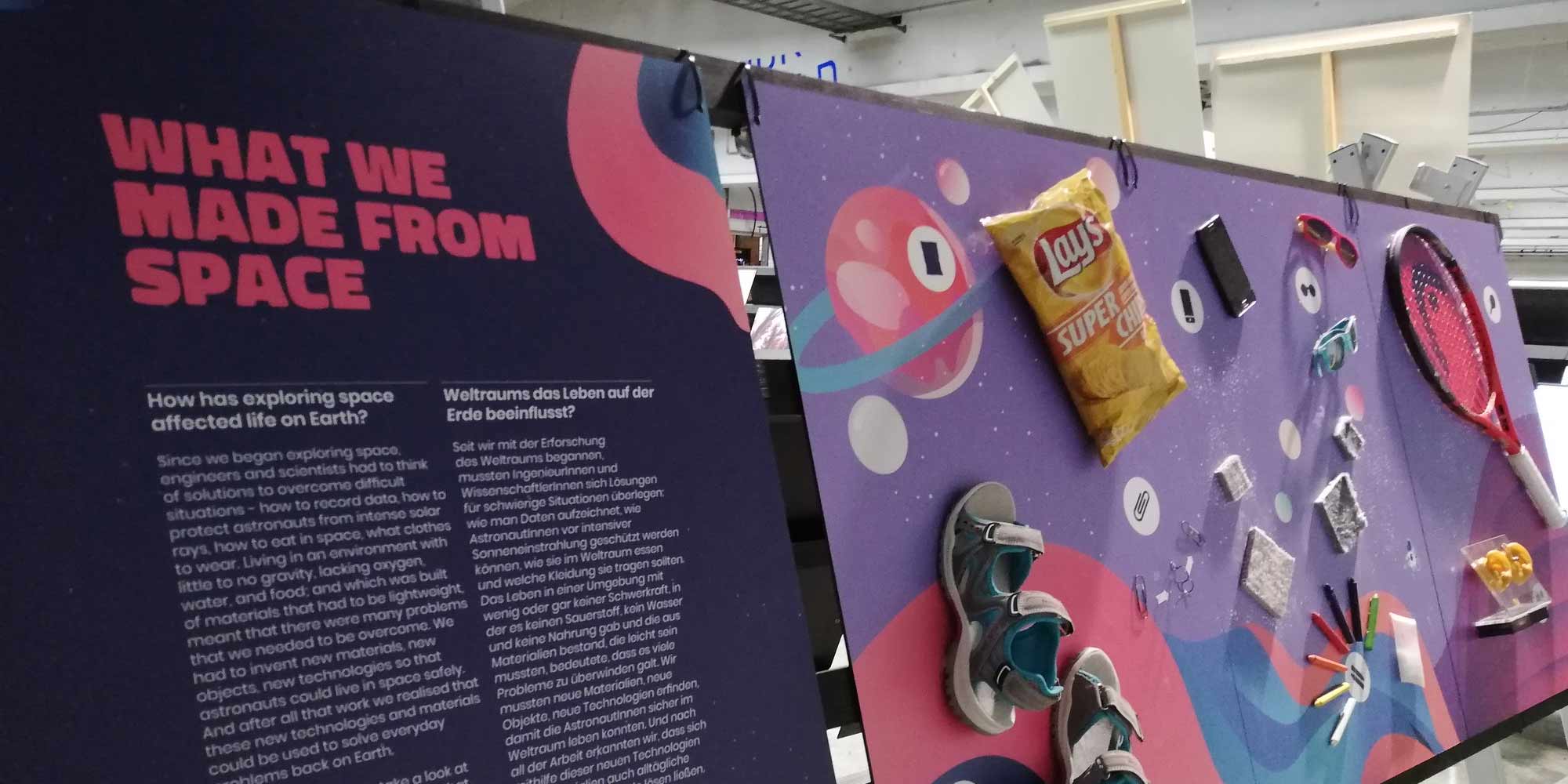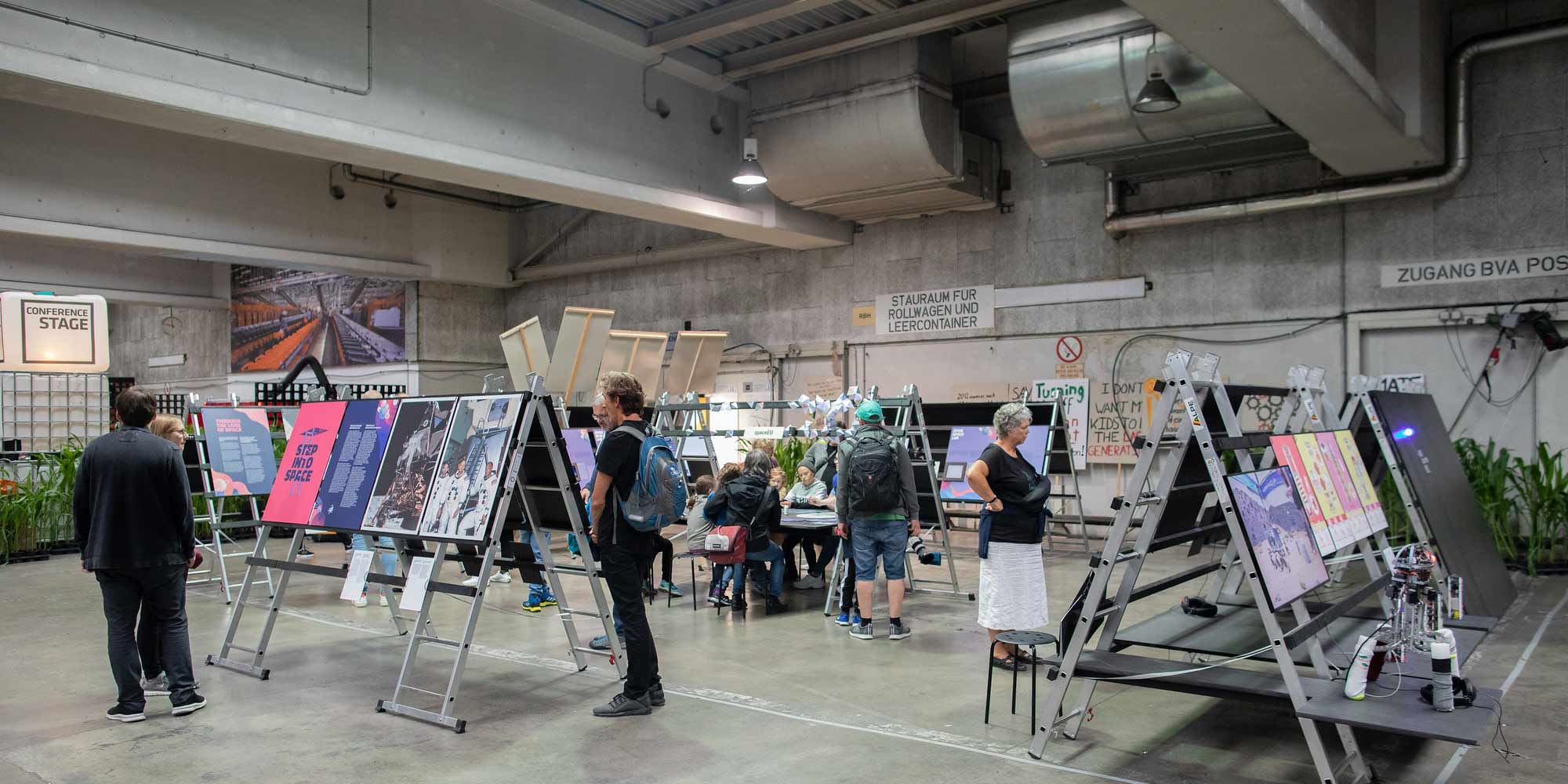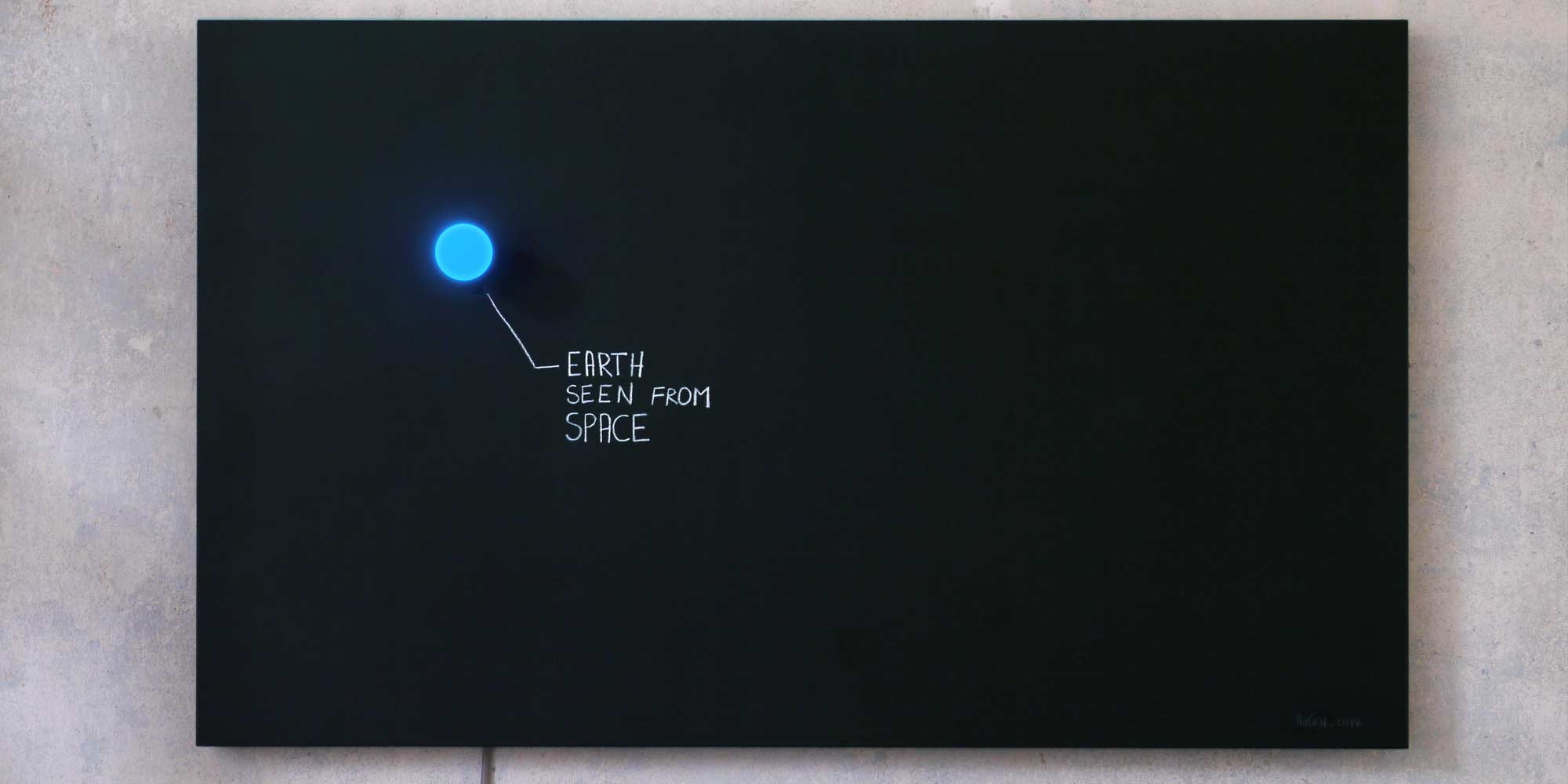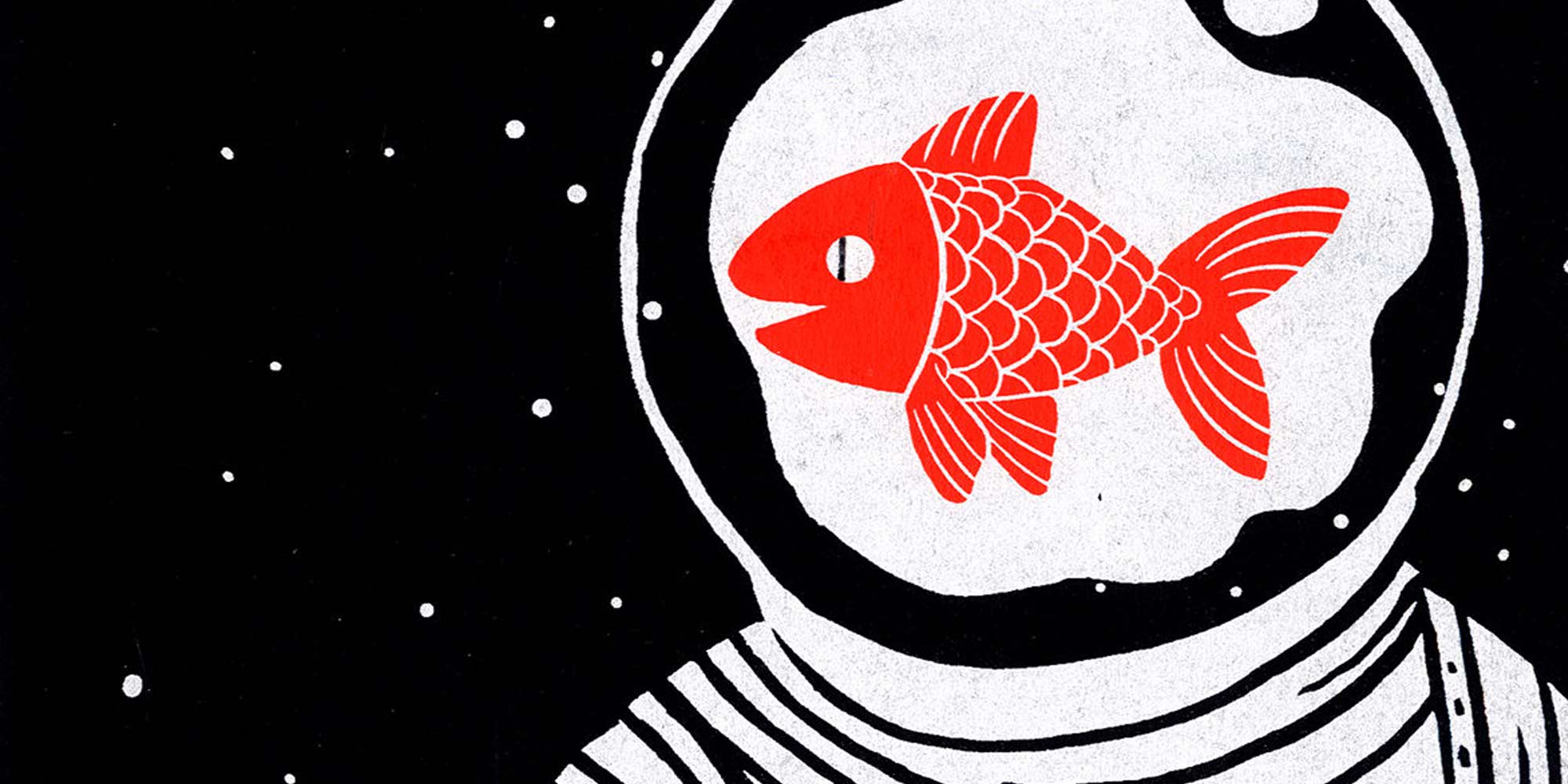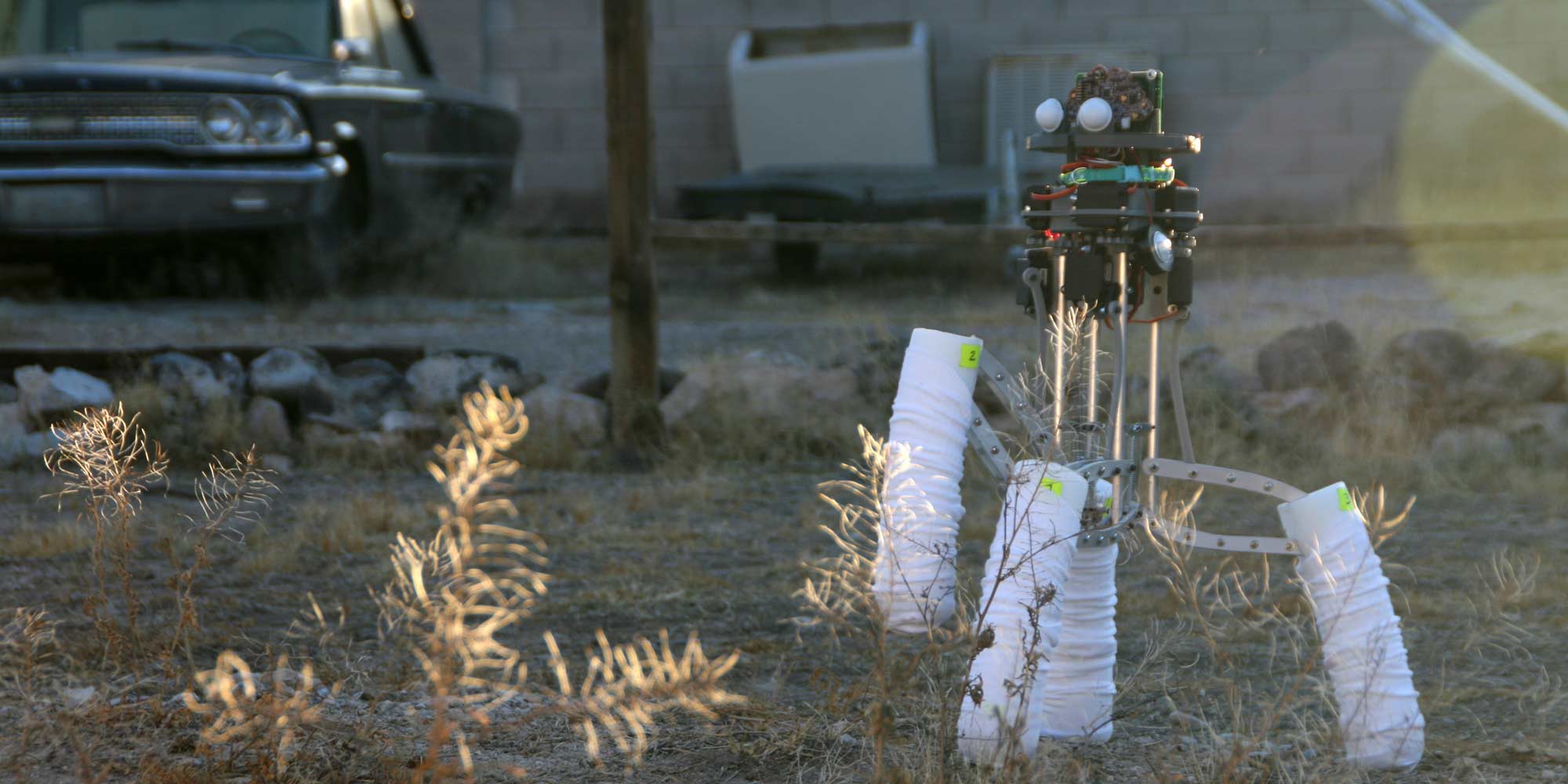About the spaceEU Exhibition Step into Space
Step into Space is a modular exhibition that presents the universe as a source of inspiration for a young audience. Developed by Ars Electronica in close collaboration with the Science Gallery Dublin and Leiden University, the exhibition is being shown in 10 different EU countries as part of the EU-funded project spaceEU. The aim is to show the exhibition outside the EU consortium. An online exhibition, a print @ home version and a toolkit for the realisation of the original exhibition should make this possible.
- Step into Space Print @ Home
- Step into Space Online Exhibition
- Step into Space Toolkit
With these simple DIY options, community centres, youth centres, schools and individuals can create their very own space exhibition. There are no limits to your creative interpretations. Both, the architecture and the stories are flexible and can be adapted according to interest, budget and space available.
If you have any questions feel free to reach out to the spaceEU project manager at Ars Electronica Laura: laura.welzenbach@ars.electronica.art
Step into Space Print @ Home
The space exploration journey comes to your home
Become an exhibition designer and explore the fascination of space at the same time. Print the pdf Step into Space booklet on A4 and the pdf Step into Space Exhibition on A3. The booklet tells you how to do it.
Have fun!
The activity’s recommended age is 10+.
Downloads:
- Print @ Home Booklet
- Print @ Home Poster
- For a word file please contact Laura Welzenbach: laura.welzenbach@ars.electronica.art
Step into Space Online Exhibition
The space exploration journey online
Experience the exhibition with a series of space missions that will guide you through an online adventure. The answers to the mission can be found in the text and images. This version is perfectly suited for teachers to introduce how space exploration has been an intrinsic part of our lives in their classrooms.
Visit the online exhibition.
Step into Space Toolkit
“Engage with Space” is the title of the toolkit and includes instructions for all the spaceEU activities. One part is dedicated to the exhibition and includes the English contents for screen or print,, the material and graphical guidelines. An architecture handbook is also needed for a successful implementation of the exhibition. The design of the programme is based on highly reproducible contents. The toolkit will be published soon. To stay informed subscribe to our spaceEU newsletter or reach out to laura.welzenbach@ars.electronica.art.
About the exhibition
Module 1: What We Made from Space
This first module tells the story about the relevance of space industry in our daily life and therefore builds the bridge to the visitor’s daily life routines. The message “The space sector is not as disconnected from our daily life as we might think” triggers curiosity. This module introduces what everyday products are made possible through research and development in the space sector. Materials like liquid metals or aerogels as well as technology that literally makes navigating our daily lives possible through accessing GPS data can be found in various objects that we hold in our hands every day.
Module 2: Through the Lens of Space
This module zooms out and looks at the earth from the outside. Earth Observation is the main key word here. Again, familiar images aim to take down barriers of engagement. Observing the earth also helps to collect data around climate change. Through introducing activism around the climate crisis, in particular a youth-led movement like Fridays for Future for example a connection to youth can be built. Digital open-source tools from ESA apps as well as the browser-based tool Sentinel Hub EO Browser by Sinergise are introduced in this part of the exhibition. With short easy to implement challenges, visitors can learn how to access the information made publicly available through these organisations.
Engagement Zone: Open Space Lab
The Open Space Lab is a zone for interaction and engagement that allows visitors to explore the exhibition through a game. Depending on what modules of the exhibition will be shown different game cards and challenges can be added to the exhibition. It’s an entry point for accessing the exhibition through game and play. The Open Space Lab consists of short missions that allow visitors to become a space agent. Some of the activities can be disconnected from the exhibition and also be implemented as a stand-alone Open Space Lab Station. As the answers to these mission questions can be found in the exhibition, we invite exhibition visitors to explore the exhibition through these activity.
Make your own Module: A Creative Space
For this module you are invited to design and curate your own Creative Space. Within the spaceEU framework the partners adapted this module in various forms. Visitors became artists and contributed to the exhibition, local artists were invited to show their space related artworks, youth groups developed their own Creative Space in a workshop (see activities) ahead of time. For the Ars Electronica Festival and the spaceEU partners Ars Electronica was able to invite different artists to contribute to Step into Space with their existing artworks. Sarah Petkus (US), We Colonised the Moon (DE/ UK), Nuotama Bodomo (GHA/ US), Jaqueline Eder, Selina Maurovich, Kilian Mayer, Stephanie Stigler (AT) and Eva Rust (CH) were part of this iteration.
Exhibition Credits
Exhibition Partners
- Sentinel Hub EO Browser by Sinergise and ESA Apps
Exhibition Crew
- The exhibition was developed by Ars Electronica in close collaboration with Science Gallery Dublin and Leiden University.
- Exhibition Co-design Manager: Laura Welzenbach
- Architecture: Gerald Moser/ Wunderkammer and Zirup – Architektur & Design
- Storyline/ Writer: Niamh Shaw
- German Translation: Theresa Apweiler
- Graphic Designer: Rory McCormick
- Tech Advisor: Bildwerk
- spaceEU Principal Investigator and Coordinator: Pedro Russo
- With contributions from: Suzana Filipecki Martins, Ryan Williamson, Grace Darcy, Joà£o Dias, Cristina Paca and Veronika Liebl.
spaceEU Partners
- Leiden University
- Ars Electronica
- Ecsite European Network for Science Centres Museums
- EUN Partnership AISBL European Schoolnet
- Science Gallery at Trinity College Dublin
- Ellinogermaniki Agogi
- Ciência Viva
- Cité de l’espace
- Parque de las Ciencias
- Universum’® Bremen
- SCIENCE IN
- New Space Foundation
Exhibition Bibliography
- App Store. ‎Apps von ESA – European Space Agency im App Store’. Accessed 10 February 2019. https://apps.apple.com/de/developer/esa-european-space-agency/id429660009.
- Biomass — ESA DUE Globbiomass’. Accessed 9 January 2019. http://globbiomass.org/biomass/.
- Out of the Box. Blue Moon’. Accessed 21 July 2019. http://ars.electronica.art/outofthebox/en/blue-moon/.
- Eva Rust. Chimponauts & Astrocats’. Accessed 14 April 2019. http://www.evarust.ch/shop/q489gwss5fdomjp42imbv7elp02xkn.
- China’s Huge Panda-Shaped Solar Farm. Accessed 9 January 2019. https://www.youtube.com/watch?v=9D4DZw_Gpsw.
- CMOS’. In Wikipedia, 7 December 2019. https://en.wikipedia.org/w/index.php?title=CMOS&oldid=929684598.
- PV Tech. Enel Completes Largest Solar Project in Mexico, Connects 1,089MW to the Grid’. Accessed 9 January 2019. https://www.pv-tech.org/news/enel-completes-largest-solar-project-in-mexico-connects-1089mw-to-the-grid.
- Google Docs. EO Browser Guide V11.Pdf’. Accessed 9 January 2019. https://drive.google.com/file/d/1uva7A-PQ-tlubTyTew09GfSjpNyMyFwP/view?usp=sharing&usp=embed_facebook.
- ESA – Space for Kids – ESA’s Living Planet Programme’. Accessed 9 January 2019. https://www.esa.int/kids/en/learn/Earth/ESA_s_Living_Planet_Programme.
- ESA – Space for Kids – From Medicine to Music’. Accessed 9 January 2019. https://www.esa.int/kids/en/learn/Technology/Useful_space/From_medicine_to_music.
- ESA – Space for Kids – Galileo’. Accessed 9 January 2019. https://www.esa.int/kids/en/learn/Technology/Useful_space/Galileo.
- ESA – Space for Kids – Learn’. Accessed 9 January 2019. https://www.esa.int/kids/en/learn?s509519/s509539.
- ESA – Space for Kids – Satellite Navigation’. Accessed 9 January 2019. https://www.esa.int/kids/en/learn/Technology/Useful_space/Satellite_navigation.
- YouTube. ESA European Space Agency on YouTube’. Accessed 9 January 2019. https://www.youtube.com/channel/UCIBaDdAbGlFDeS33shmlD0A.
- ESA Images and Multimedia’. Accessed 9 January 2019. https://www.esa.int/ESA_Multimedia/Images.
- Fridays For Future Austria’. Accessed 9 January 2019. https://fridaysforfuture.at/.
- Gladys West’. In Wikipedia, 14 April 2019. https://de.wikipedia.org/w/index.php?title=Gladys_West&oldid=187556205.
- Hieslmair, Martin. The Wandering Artist Project – Ars Electronica Blog’, 30 May 2017. https://ars.electronica.art/aeblog/en/2017/05/30/the-wandering-artist-project/.
- Kerbal Space Program — Create and Manage Your Own Space Program’. Accessed 9 March 2019. https://www.kerbalspaceprogram.com/.
- Map – FridaysForFuture’. Accessed 18 March 2019. https://www.fridaysforfuture.org/events/map.
- Meet Dr Jorge Vago’. Accessed 17 April 2019. http://www.space-awareness.org/de/careers/interview/dr-jorge-vago/.
- Meet Dr Kate Isaak’. Accessed 17 April 2019. http://www.space-awareness.org/de/careers/interview/dr-kate-isaak/.
- Nace, Trevor. NASA Says Earth Is Greener Today Than 20 Years Ago Thanks To China, India’. Forbes. Accessed 17 April 2019. https://www.forbes.com/sites/trevornace/2019/02/28/nasa-says-earth-is-greener-today-than-20-years-ago-thanks-to-china-india/.
- NoodleFeet’. Accessed 17 April 2019. http://noodlefeet.zoness.com/.
- Nuotama Bodomo’. Accessed 17 April 2019. https://nuotamabodomo.info/.
- Panda-Kraftwerk Datong’. In Wikipedia, 7 August 2019. https://de.wikipedia.org/w/index.php?title=Panda-Kraftwerk_Datong&oldid=191116264.
- Ars Electronica Center. Raumschiff Erde’. Accessed 9 January 2019. https://ars.electronica.art/center/de/exhibitions/spaceship-earth/.
- Satellite Image Guide for Journalists and Media – Pierre Markuse’. Accessed 17 April 2019. https://pierre-markuse.net/2018/12/18/satellite-image-guide-for-journalists-and-media/.
- Sentinel-Hub EO-Browser’. Accessed 17 April 2019. https://apps.sentinel-hub.com/eo-browser/.
- Serpell, Namwali. The Zambian “Afronaut” Who Wanted to Join the Space Race’, 11 March 2017. https://www.newyorker.com/culture/culture-desk/the-zambian-afronaut-who-wanted-to-join-the-space-race.
- Space Awareness’. Accessed 9 March 2019. http://www.space-awareness.org/de/.
- Space Scoop’. Accessed 9 January 2019. http://www.spacescoop.org/en/.
- Nasa Home & City. Space Technology In Your Home’. Accessed 9 January 2010. https://homeandcity.nasa.gov/nasa/home.
- Villanueva Photovoltaic Plant — Prodiel’. Accessed 9 May 2019. http://prodiel.com/en/villanueva-photovoltaic-plant/.
- Voyager Golden Record’. In Wikipedia, 14 December 2019. https://en.wikipedia.org/w/index.php?title=Voyager_Golden_Record&oldid=930684398.
- WE COLONISED THE MOON’. Accessed 9 January 2019. http://www.wecolonisedthemoon.com/.
 spaceEU project has received funding from the European Union’´s Horizon 2020 Framework Programme for Research and Innovation under grant agreement No. 821832
spaceEU project has received funding from the European Union’´s Horizon 2020 Framework Programme for Research and Innovation under grant agreement No. 821832
